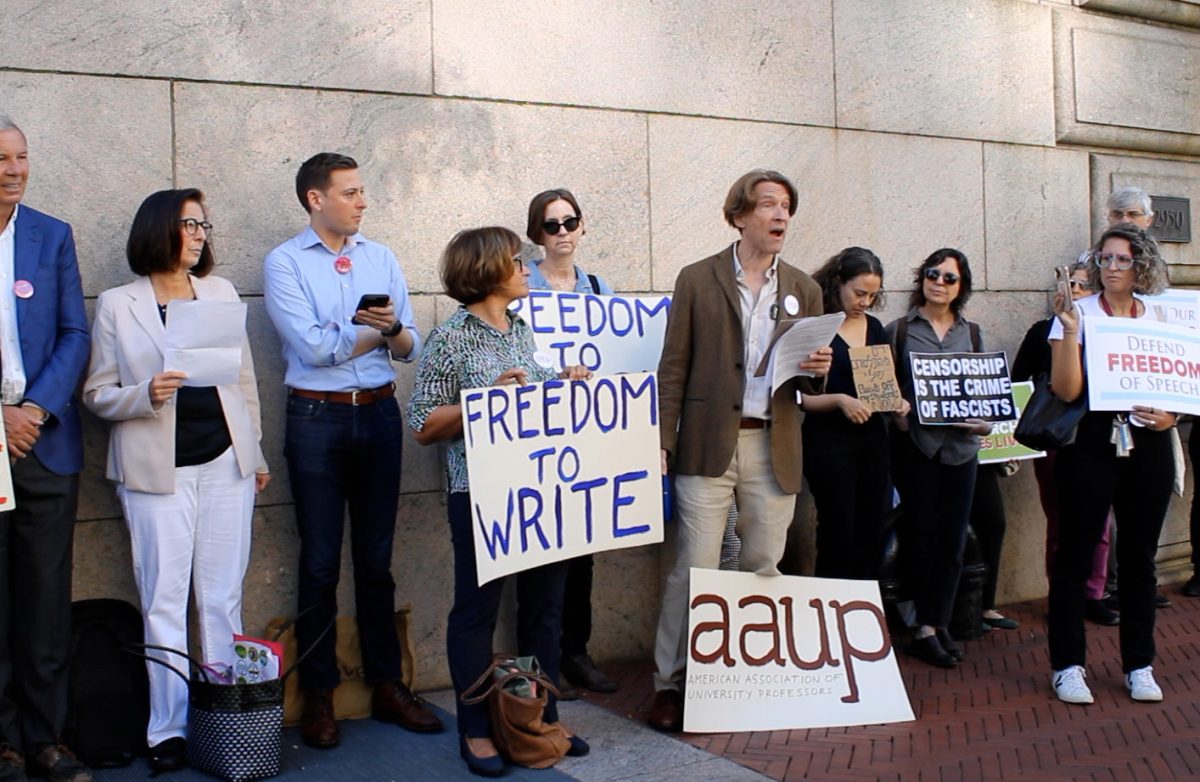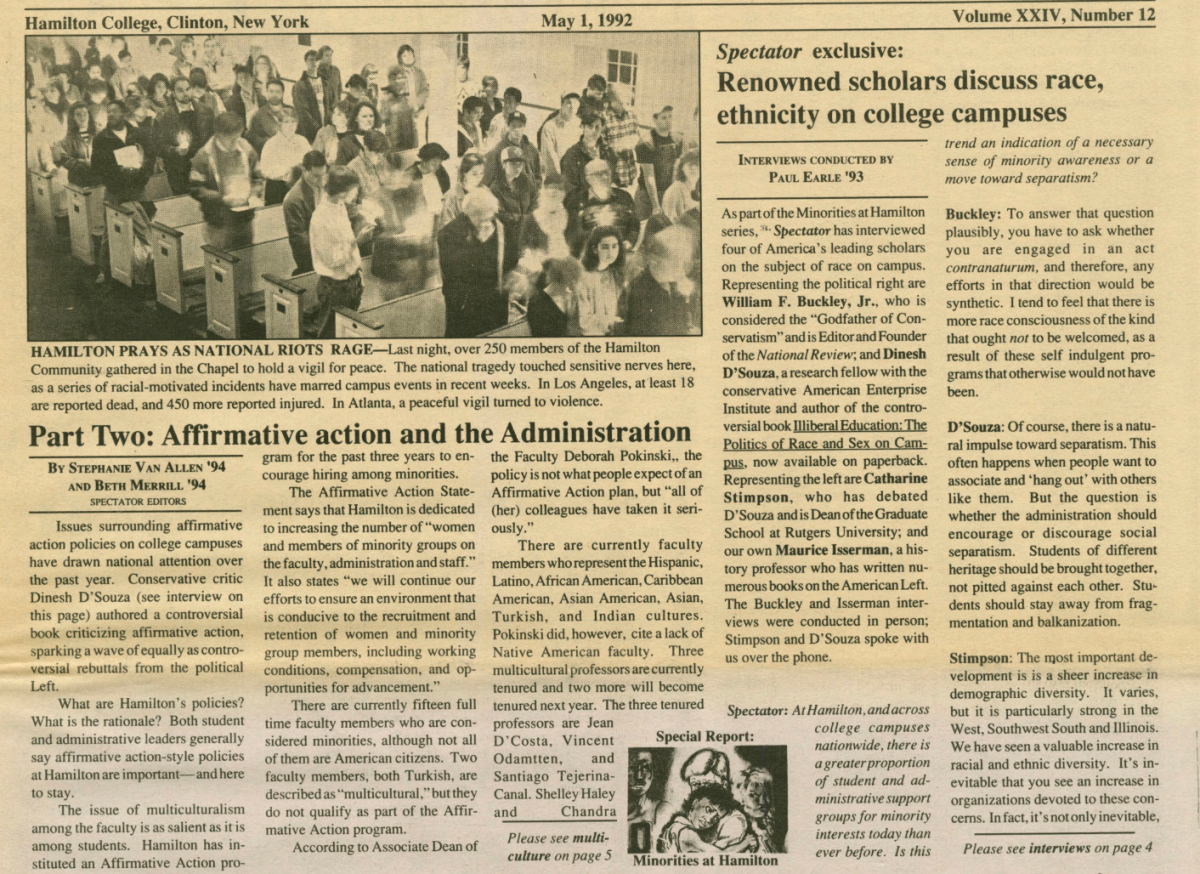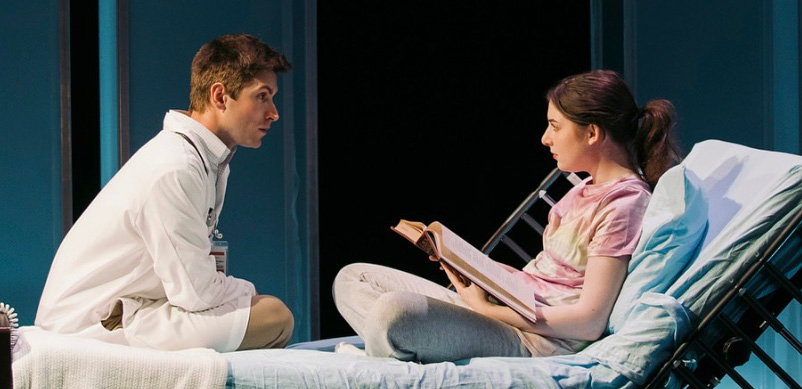
At 4 PM on Nov. 29, Louis Dzialo ’19 presented his Emerson Summer Project, “Edward Wales Root and the Birth of Arts Education at Hamilton College,” a look at Hamilton’s incorporation of the visual arts into its central curriculum at the hands of Edward Wales Root, who served as an art appreciation professor from 1920 to 1940.
Dzialo is an art history major and a docent at the Wellin Museum, conducting tours and working behind-the-scenes on exhibits. “I was led to take on this project because I’ve done a lot of things in the art world both at Hamilton and in jobs/internships off the Hill, but I’ve never taken on an extensive research project, especially one that used primary source documents. I wanted to see if the trench work that graduate level students do in archives and libraries was something I liked and could do. It was a way of challenging myself because I’m thinking about getting a graduate level degree in art history at some point. Also it was about the history of the College and I’m pretty interested in that as well.”
Edward Wales Root was born in 1896 to former US Secretary of State, Secretary of War, and Nobel Prize winner Elihu Root, for whom several buildings on campus are named. In 1910, at the tender age of twenty-four, Edward became a lifetime fellow at the Metropolitan Museum of Art in New York City, despite having no previous formal art education.
“Probably my favorite fact about Root’s life is that he fell in with such a rough and tumble group of people — the ashcan artists — when he lived in New York City after college,” said Dzialo.
This was someone who was ostensibly quite shy and introverted because of his growing deafness but he really connected with people who were completely different to him. They were poor struggling artists and he was the son of one of the richest and most powerful men in the country but he connected with them because he needed friends and he had always felt like an outsider in his own family.”
Edward spent much of his twenties living in New York City, exploring the city’s art scene with prominent artists like George Luks and Ernest Lawson. He also began to compile his art collection, much of which currently resides in the Munson Williams Proctor Art Institute in Utica, NY. Root’s own artistic taste was heavily influenced by the 1913 Armory Show in New York, which showcased modern art pieces by artists like Matisse, Marcel Duchamp, and Paul Gauguin.
In 1920, Root was hired at Hamilton College as its first Art Appreciation professor. At the time, art was far from ubiquitous on campus, partly due to the strict parochialism of its president, M. Woolsey Stryker, who believed that Hamilton’s mission should revolve around “practical” coursework, like legal study and divinity. The contrast between Stryker and Root’s views on art education landed them in the center of a national debate on the merit of visual art study in academia. Some were adamant that art be studied like a science, delving heavily into research and theory with little aesthetic appreciation. Others focused on the creation of visual art, and studying technique and form through practical application. When Edward Root initially arrived on campus, he chose the former teaching style, but as he realized that his students, many of whom hailed from rural New York and had little exposure to fine art, lacked experience with the physical study of art, he began to transition to the latter.
Root pioneered creative techniques for acquainting his students with color and space, such as the spinning wheel experiment, where he had his students take two different colors of yarn and spin them together to create a third. Root invited his old friend George Luks up to Hamilton College to “dry out” (Luks was an alcoholic,) and bring students into what is now the Root Glen to learn about the applications of different realist techniques. Root also founded the English-Fine Arts Club, which offered an extracurricular opportunity for students to grow their visual art skill set. Root would invite students over to his on-campus home to evaluate works and discuss their merit in a small, casual setting. In doing so, Root integrated art appreciation into his students’ daily lives and set a precedent for intimate academic discussions with professors that Hamilton still prides itself on today.
Edward Wales Root died in 1956 in Clinton, as one of the most well-regarded Art Appreciation professors in the country. His contributions to the school can be summed up in a quote by his wife: “He always has the next generation in mind. He plants the acorns not the oaks.”
For more information on Edward Wales Root or Louis’ presentation, email [email protected].

















